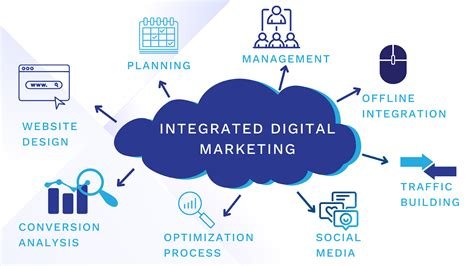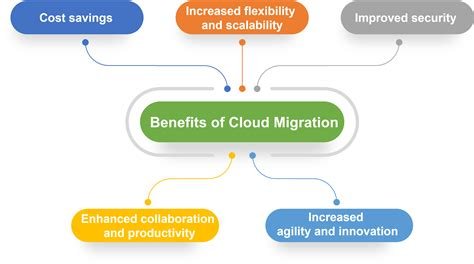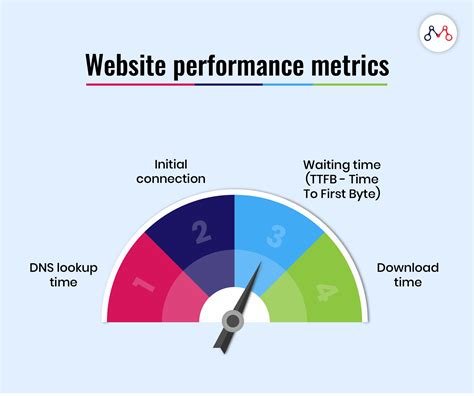This article explores how automation is transforming the landscape of supply chain management. It begins by highlighting the significant impact of automation on efficiency and cost reduction, followed by a discussion of essential tools and technologies necessary for a successful transition to automated systems. The article also addresses how automation minimizes human errors, enhancing accuracy and reliability in supply chain processes. Integration challenges are examined, offering practical solutions to overcome these hurdles. Moreover, real-world examples illustrate how companies are thriving through automation, while future trends provide insights into the evolving role of technology in supply chain management. Key takeaways emphasize the importance of carefully implementing automation strategies to reap maximum benefits. In conclusion, the article presents a comprehensive overview of how automation is not only beneficial for current supply chain practices but also shapes their future.
Introduction To How Automation Is Transforming Supply Chain Management
The integration of automation within supply chain management is a significant shift changing the industry’s dynamics. How Automation enhances operations not only streamlines processes but also drives efficiency and precision. Traditional supply chains often face challenges in responsiveness and adaptability, but automation solutions tackle these issues head-on. By implementing various technologies, businesses can expect rapid transformations in various aspects of supply management.
Through the use of automation, supply chains can improve their operational efficiency dramatically. Processes that traditionally required substantial manpower can now be executed seamlessly through automated systems. This shift leads to enhanced productivity and faster turnaround times. Moreover, as organizations strive for greater profitability, they discover that integrating automation results in lower operational costs while maintaining high service standards.
Key Benefits Of Automation
- Increased efficiency in operations
- Reduction in operational costs
- Enhanced accuracy and reduction of errors
- Improved inventory management
- Greater flexibility in supply chain processes
- Faster processing and delivery times
- Data-driven decision-making capabilities
The benefits of automation extend beyond mere efficiency. Businesses that adopt smart automation solutions can gain insights from data that enable informed decision-making and predictive analytics. These capabilities enhance not only day-to-day operations but also longer-term strategic planning. Ultimately, organizations that leverage automation can position themselves to adapt swiftly to market changes and meet evolving customer demands.
Understanding The Impact Of Automation On Efficiency And Cost Reduction
The implementation of automation in supply chain management significantly enhances operational efficiency while driving cost reduction. How Automation streamlines processes, reduces delays, and eliminates redundancies, which collectively improve overall productivity. By integrating robotic process automation (RPA) and artificial intelligence (AI), organizations can optimize workflows and make data-driven decisions that yield remarkable benefits.
Furthermore, automation directly affects cost savings by minimizing labor-related expenses and lowering the likelihood of costly errors. Automated systems can handle repetitive tasks, allowing your workforce to focus on more complex and value-added activities. This shift not only boosts morale but also fosters innovation within teams, leading to more strategic growth initiatives.
Steps To Measure Efficiency Gains:
- Identify key performance indicators (KPIs) to track.
- Establish a baseline measurement before automation implementation.
- Monitor changes in productivity metrics post-automation.
- Analyze labor cost reductions related to automated processes.
- Evaluate error rates and quality improvements after automation.
- Calculate time savings associated with efficiency gains.
- Assess customer satisfaction levels as a result of improved services.
The integration of such automated solutions not only leads to operational efficiencies but also positions companies competitively in the landscape. Embracing innovations in supply chain processes, businesses can leverage insights to refine their sourcing, warehousing, and distribution strategies. The transition towards automation serves not only as a trend but a necessity in maintaining operational effectiveness and profitability.
As companies increasingly adopt automation technologies, the effects on supply chains are profound, reshaping the way goods are delivered and services are rendered.
Ultimately, understanding the impact of automation on efficiency and cost reduction is crucial for organizations that aim to thrive in today’s dynamic market. By continually assessing the outcomes of automated initiatives, companies can ensure they are on a path to sustained growth and success while effectively responding to the ever-evolving demands of their operations.
Adopting Automation: Essential Tools And Technologies For Supply Chains
As businesses increasingly seek efficiency and accuracy, how automation can revolutionize supply chains is gaining attention. These technologies are being integrated at multiple levels, facilitating smoother operations and allowing organizations to respond quickly to market changes. With the right tools, companies can optimize inventory management, shipping processes, and data analysis, leading to significant productivity gains.
To successfully integrate automation into supply chains, businesses must select the appropriate tools and technologies. Below is a list of Must-Have Tools that every modern supply chain should consider:
- Warehouse Management Systems (WMS)
- Robotic Process Automation (RPA)
- AI-Powered Analytics Tools
- Inventory Management Software
- Transportation Management Systems (TMS)
- Supply Chain Visibility Platforms
- Collaboration Tools
These essential tools can significantly enhance various aspects of supply chain management. However, it is crucial to understand how individual technologies, such as robotic process automation and AI-powered analytics, contribute to this transformation.
Robotic Process Automation
Robotic Process Automation (RPA) has emerged as a game-changer in supply chain management. By automating repetitive and mundane tasks, RPA not only frees up valuable human resources but also enhances overall efficiency. For example, tasks such as data entry, invoicing, and order processing can be automated, minimizing errors while maximizing speed. Implementing RPA allows companies to redeploy their human capital to more strategic tasks, resulting in improved morale and productivity.
AI-Powered Analytics
AI-Powered Analytics is another critical component of automation in supply chains. This technology utilizes advanced algorithms and machine learning to analyze vast amounts of data, providing insights that drive better decision-making. By leveraging AI insights, businesses can foresee trends, manage risks, and optimize their supply chain processes. How automation is influencing informed decision-making is evident in its ability to provide real-time analytics that enhances responsiveness and agility.
How Automation Reduces Human Errors In Supply Chain Management
How Automation in supply chain management serves as a strategic tool to mitigate human errors that can lead to significant financial loss and inefficient operations. By integrating automated systems, organizations can carefully monitor processes, reduce variability, and uphold consistent standards across the board. This not only enhances productivity but also reinforces reliability in supply chain operations.
Human errors in supply chain management can stem from various factors, including oversight, miscommunication, and fatigue. Consequently, relying on manual processes increases the likelihood of these missteps. Embracing technology is a critical solution to streamline operations, allowing for enhanced accuracy and efficiency. In adopting automation, businesses can create a more robust framework, capable of responding swiftly to market demands without risking error-prone manual input.
Common Causes Of Human Errors:
- Inadequate training of staff
- Fatigue during long shifts
- Miscommunication among teams
- Complexity in manual processes
- Data entry mistakes
- Overconfidence in past experiences
Through automation, organizations can systematically eliminate many of these common issues. Automated tools and software can handle repetitive tasks such as data entry and inventory tracking more efficiently than a human workforce. Moreover, these systems are designed to operate continuously, without the lapses that can affect human performance. This efficiency allows human employees to focus on decision-making and strategic activities, further enhancing organizational effectiveness.
How Automation also contributes to real-time data accuracy, providing stakeholders with the necessary insights to make informed decisions. With automated reporting tools, businesses can access up-to-date metrics regarding inventory levels, supplier performance, and customer demand. This transparency enables companies to respond proactively to any discrepancies and adjust their supply chain strategies accordingly. As a result, the risk of human error diminishes, paving the way for a more agile and resilient supply chain.
Integration Challenges Of Automation And Tips To Overcome Them
In the realm of supply chain management, how automation impacts operational efficiency is undeniable. However, the journey to seamless integration is often fraught with challenges. Organizations may face hurdles such as outdated systems, resistance to change among staff, and the complexity of integrating new technologies with existing processes.
Addressing these integration challenges requires a strategic approach. It’s essential to understand the specific pain points your organization is facing. Identifying gaps in the current system will help in creating a tailored roadmap that accommodates both existing workflows and new automation technologies. This thorough analysis lays the groundwork for successful implementation, ensuring all aspects of the supply chain are aligned.
Steps To Ensure Successful Integration:
- Assess current processes and identify automation opportunities.
- Engage with stakeholders to foster buy-in and address concerns.
- Choose automation technologies that align with business goals.
- Develop a comprehensive training plan for staff.
- Implement phased rollouts to minimize disruptions.
- Continuously monitor and optimize the integrated processes.
- Solicit feedback and make adjustments as necessary.
By following these steps, businesses can mitigate the integration challenges associated with automation. Effective planning and execution will not only enhance operational efficiency but also cultivate a culture of innovation within the organization. In the fast-evolving landscape of supply chain management, staying ahead means embracing change and using automation strategically.
Real-World Examples: Companies Excelling With Automation In Supply Chains
Several companies have embraced automation in their supply chains to stay competitive and boost their overall efficiency. These real-world examples illustrate how How Automation can lead to remarkable improvements in operations. By leveraging technology, these organizations have gained significant advantages in their respective markets. Below are some noteworthy success stories that highlight the transformative power of automation.
Success Stories In Automation
- Amazon: Streamlined logistics with robotics.
- Walmart: Enhanced inventory management systems.
- Zara: Improved production speed through automated design tools.
- Procter & Gamble: Implemented AI for demand forecasting.
- UPS: Optimized delivery routes using advanced algorithms.
- Foxconn: Increased manufacturing efficiency with robot technology.
- Siemens: Adopted digital twins for supply chain modeling.
These companies showcase how the integration of automation technologies can yield impressive results. From inventory management to delivery logistics, automation has paved the way for smarter operational strategies. The next sections will delve into specifics regarding the efficiency gains, cost savings, and error reductions achieved by some leading companies.
Company A: Efficiency Gains
Amazon, one of the pioneers in automating supply chains, has significantly boosted its efficiency through the adoption of robotics. By implementing automated systems in its warehouses, Amazon has reduced order processing times while increasing throughput capacity. The use of robots allows for faster sorting and packing, thereby enhancing the overall workflow. With a focus on seamless operational integration, Amazon exemplifies how How Automation can create streamlined processes that meet consumer demand effectively.
Company B: Cost Savings
Walmart has leveraged automation not just for efficiency but also to achieve substantial cost savings. By integrating sophisticated inventory management systems, Walmart tracks stock levels in real time, reducing excess inventory and minimizing storage costs. This strategic use of technology has enabled Walmart to pass savings on to customers, reinforcing its competitive edge. Thus, the company’s commitment to automation underscores the financial benefits that can be realized through efficient supply chain practices.
Company C: Error Reduction
Zara has adopted automation tools that enhance production accuracy and significantly reduce human errors in its supply chain. By utilizing automated design and manufacturing processes, Zara ensures that product specifications are met consistently. These advancements not only minimize errors but also streamline the process from design to delivery, positioning Zara as a leader in swift fashion cycles. This case illustrates that with How Automation is applied correctly, companies can achieve higher precision in their operations.
Future Trends In Automation Impacting Supply Chain Management
The evolution of supply chain management is significantly intertwined with technological advancements, particularly in automation. As organizations strive to enhance efficiency and reduce operational costs, how automation plays a pivotal role in reshaping supply chain dynamics cannot be overstated. The continuous development of automated solutions is revolutionizing traditional processes, leading to substantial improvements in speed, accuracy, and reliability across the supply chain.
Emerging trends indicate that automation is not a one-size-fits-all solution but a multifaceted approach that businesses can customize to fit their unique needs. Companies are leveraging artificial intelligence (AI) and machine learning (ML) to analyze vast amounts of data, thus optimizing inventory management, demand forecasting, and logistics planning. Furthermore, advancements in robotics and the Internet of Things (IoT) are paving the way for more intelligent warehouses and distribution centers, where automation can perform routine tasks and enhance overall productivity.
Predictions For Automation Advances
- Increased adoption of AI-driven analytics to optimize supply chain decisions.
- Greater integration of autonomous vehicles in logistics and transportation.
- Expansion of robotic process automation (RPA) within warehousing operations.
- Enhancements in real-time tracking and visibility solutions through IoT.
- Implementation of blockchain technology for transparent supply chain operations.
- Gains in workforce efficiency with the introduction of collaborative robots (cobots).
- Expansion of cloud-based systems for seamless automation across the supply chain.
As businesses increasingly recognize the advantages of automation, it becomes essential to stay ahead of these trends. In this rapidly changing landscape, companies that adopt an innovative mindset toward how automation can streamline and enhance their supply chain processes will undoubtedly attain a competitive edge. By embracing technology and being adaptable to new advancements, supply chains will not only improve performance but also significantly influence customer satisfaction and business success.
Key Takeaways On Implementing Automation In Your Supply Chains
When considering the transformation that How Automation brings to supply chains, it’s essential to highlight several key takeaways that could make or break your implementation strategy. Understanding both the advantages and potential pitfalls can equip businesses to navigate the complexities of integrating automation technologies effectively. From enhanced efficiency to improved accuracy, the implications of automation are profound, rendering it a necessity in modern supply chain management.
One fundamental takeaway is the need for a strategic approach to technology adoption. Implementing automation shouldn’t be just about purchasing the latest software or machinery; it involves a thorough evaluation of your supply chain processes. This involves identifying specific areas where automation will yield the best results, such as inventory management, order processing, and logistics. By streamlining these processes, companies can significantly reduce operational costs and improve service delivery.
- Actionable Steps To Get Started
- Assess current supply chain processes to identify automation opportunities.
- Research and select the right tools and technologies tailored for your needs.
- Develop a clear implementation plan with timelines and resource allocation.
- Train employees on new systems and automation tools for seamless transition.
- Continuously monitor and evaluate the performance post-implementation.
- Seek feedback from all levels of staff to identify areas of improvement.
- Stay updated with emerging technologies to keep your systems competitive.
Furthermore, it’s crucial to recognize that while automation significantly reduces the risk of human error, it requires careful planning and execution. Errors during the integration phase can lead to disruptions in the supply chain, ultimately affecting service levels. Thus, establishing robust testing protocols before fully launching any automated system is vital. This ensures that potential issues are identified and rectified early on, safeguarding your supply chain’s integrity.
Lastly, successful automation implementation hinges on ongoing evaluation and flexibility. Supply chains must remain adaptable to change, and businesses should be prepared to adjust their automated systems as necessary. By fostering a culture of continuous improvement and technological adaptation, companies can maintain a competitive edge in the fast-evolving landscape of supply chain management driven by How Automation.
In Conclusion: The Benefits And Future Of Automation In Supply Chains
As we reflect on the transformative journey of supply chain management, it is evident that How Automation has become a cornerstone of modern operations. Implementing automation technologies not only streamlines processes but also introduces a level of precision and speed that was previously unattainable. Businesses leveraging automation are witnessing enhanced efficiency, which directly impacts their bottom line and customer satisfaction. The evolution of automation continues to pave the way for future innovations in supply chains.
The benefits of automation in supply chains extend beyond immediate quantitative improvements. Companies are experiencing significant advancements in areas such as inventory management, order fulfillment, and supplier collaboration. By minimizing reliance on manual processes, organizations can reallocate human resources towards strategic initiatives that drive growth. Furthermore, automated systems are equipped with advanced analytics capabilities, allowing for informed decision-making and proactive problem-solving.
Summary Of Automation Benefits
- Increased operational efficiency
- Reduction in labor costs
- Enhanced accuracy in order processing
- Improved supply chain visibility
- Better inventory management
- Faster response times to market demands
As we delve into the future, the trajectory of automation in supply chains appears promising. The integration of artificial intelligence and machine learning is expected to amplify its capabilities, leading to smarter and more autonomous supply chain networks. Businesses that stay ahead of these trends will not only improve their operational models but will also gain a competitive edge in the industry. Adopting a forward-thinking mindset regarding automation will empower organizations to harness its full potential, setting the stage for success in the evolving supply chain landscape.









